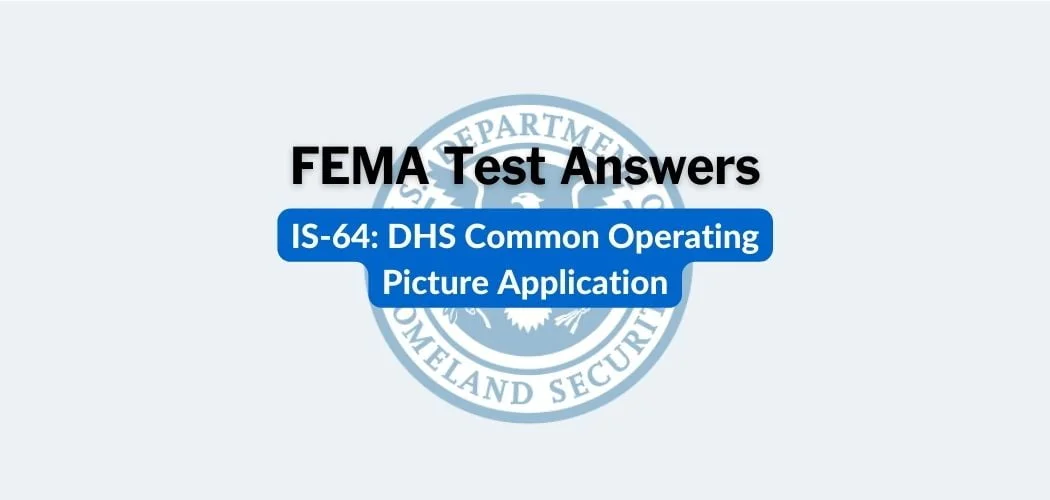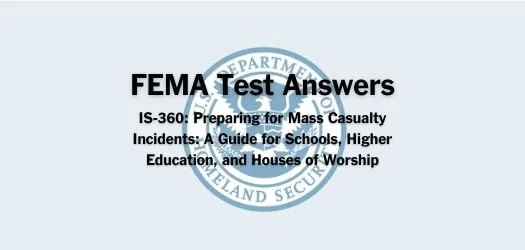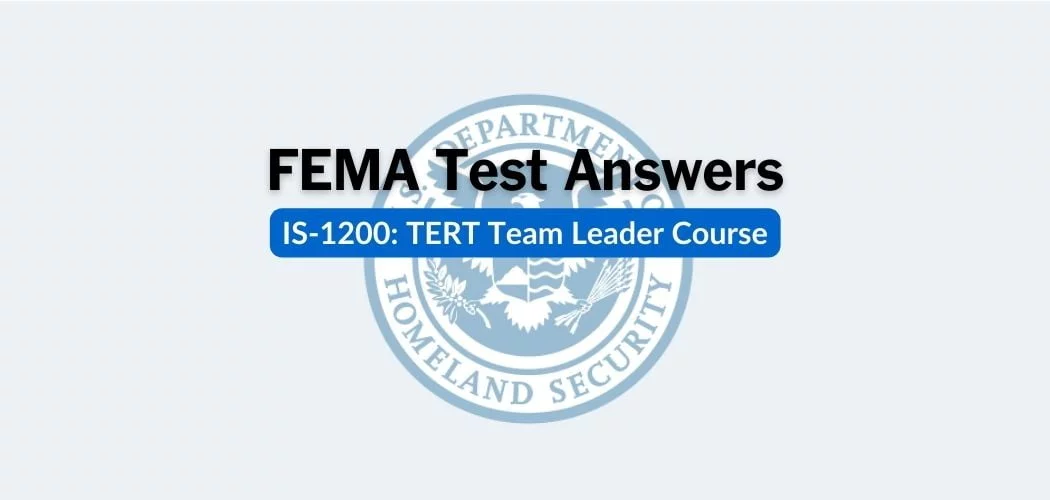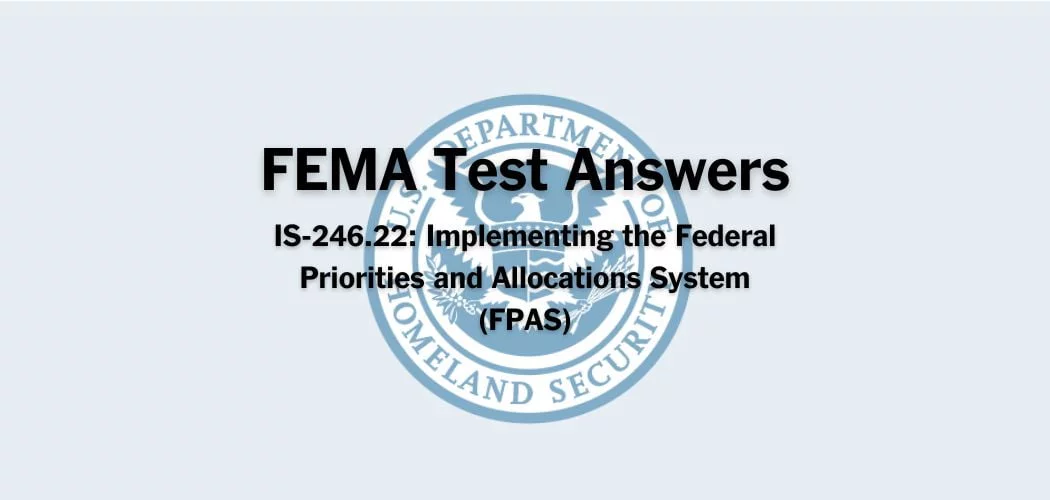IS-276.A: Benefit-Cost Analysis Fundamentals has been retired without a replacement.
FEMA IS-276.A test answers
Each time this test is loaded, you will receive a unique set of questions and answers. The test questions are scrambled to protect the integrity of the exam.
Question 1. The end result of a Benefit-Cost Analysis is a Benefit-Cost Ratio, which is calculated by dividing a mitigation project’s benefits by its costs.
A. TRUE✅
B. FALSE
Question 2. OMB Circular No. A-94 Revised:
A. Provides guidelines and discount rates for Benefit-Cost Analysis of federal programs✅
B. Provides guidelines on how to develop a Flood Insurance Study
C. Provides guidelines on how to develop a cost estimate for a mitigation project
D. Provides guidelines on how to determine the First Floor Elevation of a structure
Question 3. The terms Project Useful Life and project effectiveness mean the same thing.
A. TRUE
B. FALSE✅
Question 4. The method by which the future benefits of a mitigation project are calculated and compared to the project costs is called
A. Benefit-Cost Analysis✅
B. Mitigation
C. Loss Avoidance
D. Risk Analysis
Question 5. The Benefit-Cost Analysis website provides program guidelines, methodologies, and software modules for conducting a benefit-cost analysis for projects that mitigate risk from a range of natural hazards.
A. TRUE✅
B. FALSE
Question 6. The rate of flow for each flood event, which increases as the flood event gets larger, is called:
A. Flood Discharge✅
B. Streambed Elevation
C. Flood Elevation
D. Flood Probability
Question 7. The Benefit-Cost Ratio is a numerical expression of the cost-effectiveness of a mitigation project. A project is considered to be cost-effective only if:
A. The Benefit-Cost Ratio is equal to or greater than 1.0.✅
B. The Benefit-Cost Ratio is equal to or greater than 1.5.
C. The Benefit-Cost Ratio is equal to or greater than 0.5.
D. The Benefit-Cost Ratio is equal to or greater than 2.0.
Question 8. Losses that can be avoided as a result of completing a mitigation project include all of the following except:
A. Loss of function
B. Structure demolition costs✅
C. Emergency management costs
D. Physical damages
Question 9. FEMA has provided resources such as websites and training courses to provide the skills and knowledge needed to conduct a Benefit-Cost Analysis or review a completed Benefit-Cost Analysis.
A. TRUE✅
B. FALSE
Question 10. The Base Flood Elevation is the height of the floodwater at the project site if the:
A. 10-year flood, also referred to as the 10% annual chance flood, occurs
B. 50-year flood, also referred to as the 2% annual chance flood, occurs
C. 100-year flood, also referred to as the 1% annual chance flood, occurs✅
D. 500-year flood, also referred to as the 0.2% annual chance flood, occurs
Question 11. Project Useful Life is the estimated amount of time (in years) that the mitigation project would be effective.
A. TRUE✅
B. FALSE
Question 12. EMI provides both classroom and independent study courses on how to use the Benefit-Cost Analysis Tool.
A. TRUE✅
B. FALSE
Question 13. Which office or department requires FEMA hazard mitigation projects to be cost-effective?
A. Office of Management and Budget✅
B. Department of the Interior
C. Office of Personnel Management
D. Department of the Treasury
Question 14. The 100-year flood is a flood that has a ___ percent chance of occurring in any given year.
A. 20
B. 50
C. 1✅
D. 100
Question 15. Flood elevation is the level at which the water rises during a flood event
A. TRUE✅
B. FALSE
Question 16. Which key Benefit-Cost Analysis term is often referred to as the “time value of money”
A. Net Present Value of Future Benefits
B. Project Effectiveness
C. Present Value Coefficient
D. Discount Rate✅
Question 17. A community’s Flood Insurance Study is a reliable source for flood elevation data.
A. TRUE✅
B. FALSE
Question 18. The Streambed Elevation:
A. Is the same as the Base Flood Elevation
B. Is the peak discharge value for a flood event
C. Is the level to which the water rises in a flood event
D. Is most easily determined from a Flood Insurance Study✅
Question 19. Project Effectiveness:
A. Is the same as cost-effectiveness
B. Is a measure of how well the project will reduce future damages ✅
C. Is based on the total project costs
D. Is the amount of annual benefits that would occur for each year of the life of the project
Question 20. The Base Flood Elevation for a structure is the same as the 100-year flood elevation for that structure.
A. TRUE✅
B. FALSE
Question 21. Each combination of Project Useful Life and the discount rate has a fixed Present Value Coefficient.
A. TRUE✅
B. FALSE
Question 22. In general, the First Floor Elevation is on the lowest floor of a structure.
A. TRUE
B. FALSE✅



